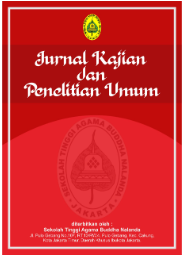Upaya Guru Mengatasi Kenakalan Siswa dalam Mengikuti Proses Belajar Mengajar di UPTD SD Negeri 03 Probur
DOI:
https://doi.org/10.47861/jkpu-nalanda.v3i1.1528Keywords:
Teacher Efforts, Student Delinquency, Forms of DelinquencyAbstract
In the teaching and learning process, teachers must see certain conditions experienced by students and hinder the smooth process carried out by individuals to obtain a new change in behavior as a whole. This particular condition can be related to his condition, namely in the form of delinquency and can also be related to an environment that is not favorable for him. These learning problems are not only experienced by students who have weaknesses in their learning, but can also disturb students who have abilities above the normal average, are clever or intelligent. The aim is to find out teachers' efforts to deal with student delinquency and to find out what factors cause student delinquency. This type of research is qualitative with a descriptive qualitative method approach. The subjects in this research were the principal, homeroom teacher, and students. Data collection techniques use non-test techniques. The instrument used was an interview sheet. Based on the results of this research, it shows that. According to the forms of delinquency that are often committed by class IV students, they include light forms of delinquency. These forms of delinquency are: playing truant, chatting/bustling during class hours, running away from school during class hours, dressing not in accordance with what has been determined, committing bullying violations; Teachers' efforts to deal with student delinquency are by: giving advice and warnings verbally and in writing, approaching parents/guardians of students, providing a special approach to the student concerned, providing guidance and understanding to the child, building good communication with students. so that students can understand what the teacher is saying and create a comfortable atmosphere. teacher obstacles in dealing with student delinquency; lack of awareness of students themselves regarding the mischief they do, lack of attention from parents towards students, lack of solidarity between teachers, parents and the school committee.
References
Ariysnti, I. Rindu. (2017). Peran Guru Dalam Mengelola Kelas Selama Proses Belajar Mengajar. 2(1), 83– 100.
Rohmawti, C. (2012). Usaha Guru Untuk Mengatasi Kenakalan Anak Kelas V Sd Negeri Kilwonan 2 Universitas Muhamadiyah Surakarta.
Sarwirini. (2011). Kenakalan Anak (Juvennile Deliquency): Kesulitan dan Upaya Penanggulangannya. 4 (April 2011), 244–251.
Shinta, A. (2018). Implementasi Peraturan Menteri Pendidikan dan Kebudayaan Nomor 82 Tahun 2015 Tentang Pencegahan dan Penanggulangan Tindak Kekerasan di Lingkungan Satuan Pendidikan. Jurnal Pendidikan Ke-SD-An, 6(1), 14–23.
Taufiqrianto, R. (2012). Kenakalan Remaja. Jurnal Inovasi, 9(02), 4–5.
Wahid, Surono, Agung hartoyo, Tomo djudin, Asrish Nurdini, A. (2023). Pendidikan karakter keimanan, ketaqwaan, dan akhlak mulia peserta didik selama penerapan aturan pertemuan tatap muka terbatas di sd negeri 03 sontas. Jurnal Pendidikan Dasar, 11(1), 136–143. https://doi.org/10.46368/jpd.v11i1.8 51
Yanah, S. (2014). Peranan Karang Tarruna Dalam Mengembangkan Kesadaran Moral Pemuda. 04(01), 30–41.
Downloads
Published
How to Cite
Issue
Section
License
Copyright (c) 2024 Yonarius Blegur, Yermia S.Wabang, Pilmo Karmaley, Magdalena M.Lape

This work is licensed under a Creative Commons Attribution-ShareAlike 4.0 International License.








